Innovation at the forefront for fruit grower Place UK
25th September 2025
With origins in the 1920s, Place UK now has an eclectic offering, from soft fruit for the fresh market, to IQF and food processing. Sarah Kidby finds out more about the technology this innovative grower is embracing.
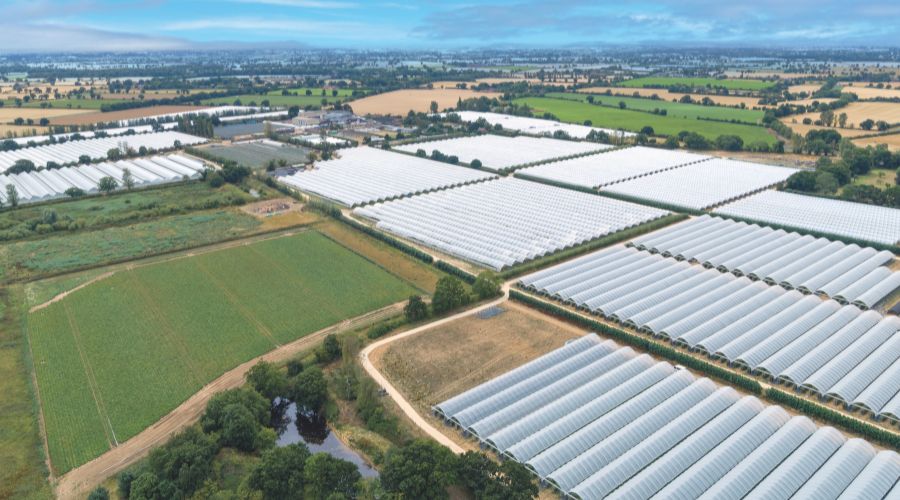
The Place family have farmed the land at Tunstead, North Norfolk, since Frank Place, a decorated WW1 soldier bought Church Farm in 1926. By 1937, the farm was supplying its Loyd George raspberries and Royal Sovereign strawberries to King George’s garden parties at Buckingham Palace, from a stall in Covent Garden.
When R&JM Place Ltd was officially formed by John Place, the grandfather of current owner Tim, in 1954, it produced and developed soft fruits to be sold to jam, yoghurt, ice cream and dessert manufacturers.
Over 70 years later this is still part of the business and it is also an IQF (individual quick frozen) supplier and food processing plant. On-site processing and packing facilities offer a huge range of products, from soft fruits, to frozen, to pasta, rice, pulses and grains. The acquisition of Phaselous Ltd in 2013 allowed the business to expand its IQF range to include beans and pulses.
While there is a senior leadership team in charge of its future direction, the family remain very much involved – Tim Place is chairman and Ben Place, fourth generation, is retail business manager.
Place UK now has 120 people on year-round payroll, and as many as 600 seasonal workers during peak season. This year, around 75% of its seasonal workforce chose to return, having worked there the previous season.
Colour, flavour, texture
The Norfolk farm grows strawberries, raspberries, cherries, blackberries and rhubarb. Over 1,500 tonnes of strawberries are picked a year from around 1.5 million plants.
The varieties for each fruit grown are:
- Strawberries: Driscoll’s Katrina, Constance, Zara and Beatrice
- Raspberries: Driscoll’s Reyna and Maravilla
- Blackberries: Driscoll’s Victoria and Clara
- Cherries: 11 varieties
- Rhubarb: Stockbridge, Timperley Early, Goliath, Livingston.
Attributes include vibrant colour, sweet flavour profile, clear aroma, beautiful shape and texture, as well as the necessary robustness.
The fruit business helps Driscolls with growing experimental berry varieties – with a focus on robust, high yielding crops which are easier to pick, reducing reliance on seasonal workers. Key characteristics are better fruit size, longer shelf life and premium flavour, as well as varieties that are resistant to pest and disease.
The strawberry harvest at Place UK runs from April to November, raspberries May to November, blackberries June to October, cherries June and July and rhubarb March to October, with forced rhubarb grown in January and February.
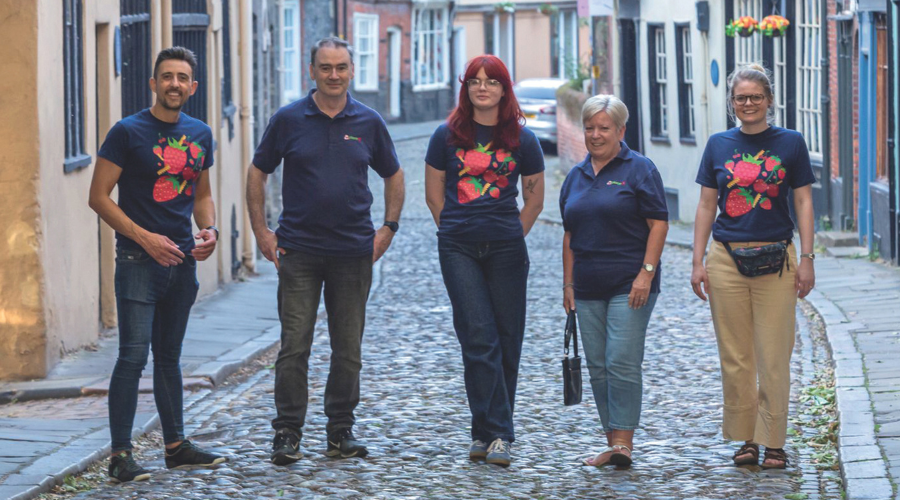
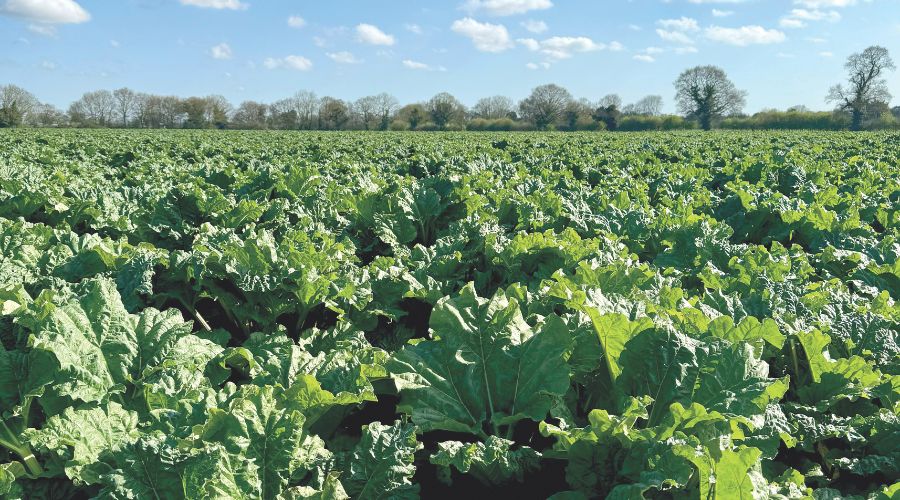
Rhubarb demand
Place UK ramped up its rhubarb production earlier this year to meet demand, which has doubled since last year due to the popularity of rhubarb-flavoured gins, vodkas, desserts and even scented tealights and toilet paper.
There was a bumper crop of rhubarb this year with over 300 tonnes of frozen production, and the business plans to increase output again this year for a major UK retailer.
Around 50 tonnes of forced rhubarb are grown each year in dark, insulated polytunnels, at a constant temperature of 10ºC, allowing the farm to produce from January to March – before reverting to the ‘traditional’ way of growing from April to October.
Crowns are grown outdoors for two years, before coming inside into the dark. Once the stems have been forced to grow in the dark conditions, they are picked approximately 40 days later. Forced rhubarb is tenderer and sweeter as the glucose is stored in the stems rather than the large leaves.
Sales are booming, but it’s a labour-intensive process. Dan Yordanov (head of fresh) explains: “When the crown is lifted from the ground and placed in a stressful environment, it essentially thinks it is going to die, so then it crops. Once it crops, it is too exhausted to be replanted in the field. So, after three years of hard work, we harvest it in just six weeks. Then we must dispose of the crown.”
The farm has been growing rhubarb this way for 11 years and they now have nine buildings containing 3,500 rhubarb crowns.
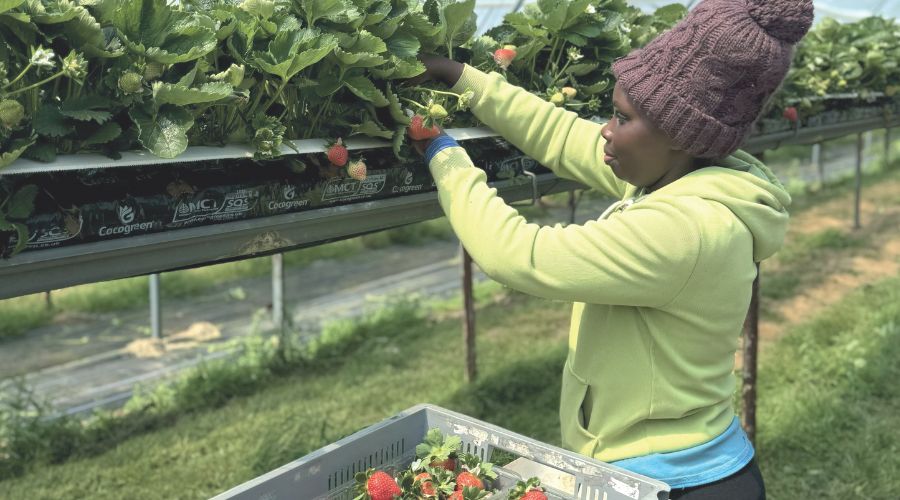
Fresh and frozen
The vast majority of the soft fruits grown on site are sold as fresh. Place UK has two factories on site – one that produces bagged frozen fruit for UK retailers (including Morrisons, Waitrose, M&S and Asda) and an IQF facility that sells into the B2B sector, including restaurants and hospitality.
The farm also has a packhouse onsite which runs alongside the fresh season and allows them to offer frozen punnets for retailer customers.
Dan, who manages fruit farming at the site, explains: “Any surplus berries not required by our fresh customers can be frozen and may end up in smoothie packs or processed into frozen purees, for example, for the hospitality sector. The rhubarb we grow on site can be frozen too within the IQF factory.”
Dan is originally from Bulgaria and has been at Place UK for 20 years. Arriving in England in 2005 as a seasonal worker via the student visa scheme, Dan’s original plan was to study engineering, improve his English language skills and explore the world. But he fell in love with the fruit sector when he started working at the Norfolk farm, and learnt from the ground up.
Trialling robotics
Mildew and botrytis are challenges for the farm so this year they have been trialling nocturnal UV robotic machines which treat plants with UV light for six hours at night, protecting crops from mildew. This cutting-edge technology has proven to be very successful in terms of improving efficiencies and reducing the environmental impact of pesticides.
Developed in Norway, the autonomous robots go to work at night, applying UV light, protecting the crops from fungal infections. They travel throughout the tunnels on a pre-mapped path, applying shortwave UV light on to the plants which controls the mildew, killing the spore and preventing it from multiplying.
Place UK also took part in the first trial for a raspberry picking robot last year. Dan comments: “Raspberry plants are very complex and a difficult fruit to machine pick, because of their delicacy. But the trial went very well, and we continue to work in partnership with the company to develop that.
“We’ve also been a trial farm for a strawberry picking robot, something that can work on a commercial scale like we have here. We want to be at the forefront of innovation to remain competitive. And it makes the work fascinating, because the technology is constantly evolving rapidly.”
Robotics have a number of benefits, but some skills still rely on the human hand and eye. Blackberry picking, for example, needs a skilled, trained person to pick the fruit when it’s absolutely at its best.
Dan adds: “Technology and trained teams need to work side by side. By combining technology and a skilled workforce, we can grow the best crops, more efficiently.
“To reduce the risks of botrytis, we are growing better varieties, which have a lower density and can be grown in an improved tunnel set up. We focus on husbandry, irrigation and harvest to reduce the risks of botrytis. And to manage phytophthora we use the best propagators and plants selection.
“Our pest challenges are aphid, thrips, two spotted spider mite, SWD. We have a robust IPM (integrated pest management) program, 28ha of wildflower mix and crops to promote pollinators and beneficial insects and use non biological control against pests.”
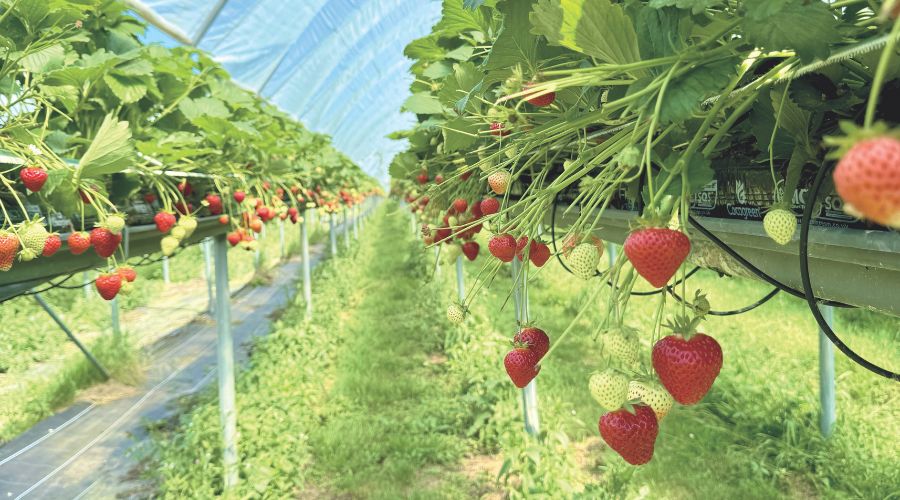
Soil health
Place UK is also growing cover crops of specific wild species of legumes, mustards and oats to improve the soil health, providing habitats for soil organisms by building up organic matter.
This also captures atmospheric nitrogen which is held in the soil for the following crop thereby reducing reliance on manufactured nitrogen, and thereby reducing carbon footprint per tonne of crop produced.
Due to their big fibrous root structure (particularly the oat species) these plants help to scavenge any soluble nutrients and hold onto them, to then slowly release to the following crop. This reduces the chances of nitrate and phosphates leaching into the water courses.
Field margins and field corners surrounding the fruit farm feature vetche phacelias, a variety of grasses and clovers, all of which provide habitats and food sources for beneficial parasitic wasps, natural aphid predators, seed eating birds, and in the understory improved habitats for small mammals such as field mice, and shrews.
Weather challenges
Unpredictable weather is causing ongoing challenges with pest and disease control, but the UV robotics innovation has given Place UK an edge, and means they are able to treat around 11ha of strawberry plants, twice a week, effectively.
“The weather, rising temperatures and extreme conditions are faced by all growers. But we are proactive and meeting the challenges head on, as best we can. In the early season of strawberry growing, we mitigate fluctuations in temperature by adopting glasshouse production,” Dan comments.
Heat stress in the height of the picking season remains the biggest risk posed by climate change.
Meanwhile high winds can cause damage to tunnels and crops, and frost in the early season and in autumn are a challenge for the farm’s forced crops and propagation. Inconsistent and unpredictable weather patterns stress the plants, and impact on production volumes.
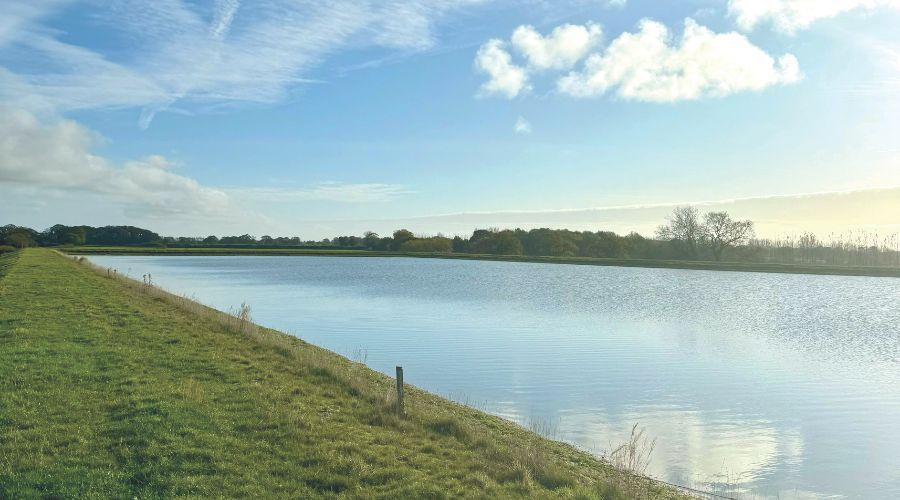
Water resilience
Place UK is harnessing renewable energy from ground source heat pumps and using a precise computerised irrigation system to harvest clean rainwater collected on the roofs of the growing tunnels.
One of the 2.2ha tunnels, home to early premium strawberries, is more than 100% self-sufficient when it comes to its water supply. The rainwater is collected on the roof of the polytunnel and then travels to a 150,000m3 reservoir.
Any nutrients needed are added to the water supply, with a network of thin pipes carrying the water into the growbags (made from coconut husks).
It’s all computerised to get the exact, optimal amount of water and nitration needed by the plants. Vents in the polytunnels are also controlled automatically by computers to adjust, open and shut, as and when the temperature and the climate demands a change.
Stefan Arsene, farm operations manager, explains: “We have phone apps to give us the control over all the technology and automation we’ve invested in. I can be sat at home making the necessary adjustments needed for the plants. The plants grow up to 17 hours a day, so need constant attention. The technology we’ve adopted means we can give them that, without being physically on site all the time.”
Additionally, there are two solar installations on the farm, providing 1,350kWh supply, which equates to a total of 38% of their total electricity supply on site.
A ground source heat pump also provides heat to a 2.2ha greenhouse to extend the strawberry growing season and enabling British strawberries to grow from April through to November.
In the last four years, Place UK’s holding company has opened two reservoirs nearby, to mitigate the Environment Agency revoking abstraction licenses across the region.
Dan says: “These reservoirs have been installed on our land with a total capacity of 350,000m3. We have in-built resilience as British summers continue to get warmer, and with droughts predicted.”
The farm has also invested in three solar PV systems for its energy generation projects, a larger 250kWh on land and stores, and a smaller 30kWh on dormitories, currently saving 80 tonnes of CO2 a year.
“And we are reviewing a 1,000kWh solar energy generation project, estimated at £1m, to reduce carbon footprint even further and continue our commitment to green clean energy. It could account for up to 32% of self-generated electricity needed for our on-site operations, saving a further 300 tonnes of CO2 per year,” Dan adds.
A newly built multi-span greenhouse also collects rainfall and stores it, while 16ha of leg-row polytunnels collect the drainage.
Innovation
Dan concludes: “New technology and innovations are constantly on our mind at Place UK, and we’re always interested to explore the benefits of new ways of working. […]
“And as active members of Agri-Tech E, we are working in partnership to identify new areas of technology and automation which we aim to be continually investing in – to ensure we’re always getting better and better.”
Find out more about the company.
Grower Profile
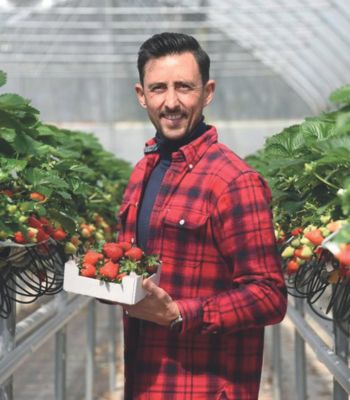
Fruit farm manager: Dan Yordanov
(head of fresh)
Location: Tunstead, North Norfolk
Total size in ha: 342 hectares
Fruit hectarage: 114ha (32ha strawberries, 25ha raspberries, 13ha blackberries, 10ha cherries, 34ha rhubarb, 228ha land rental and arable).
Read more grower profiles.
